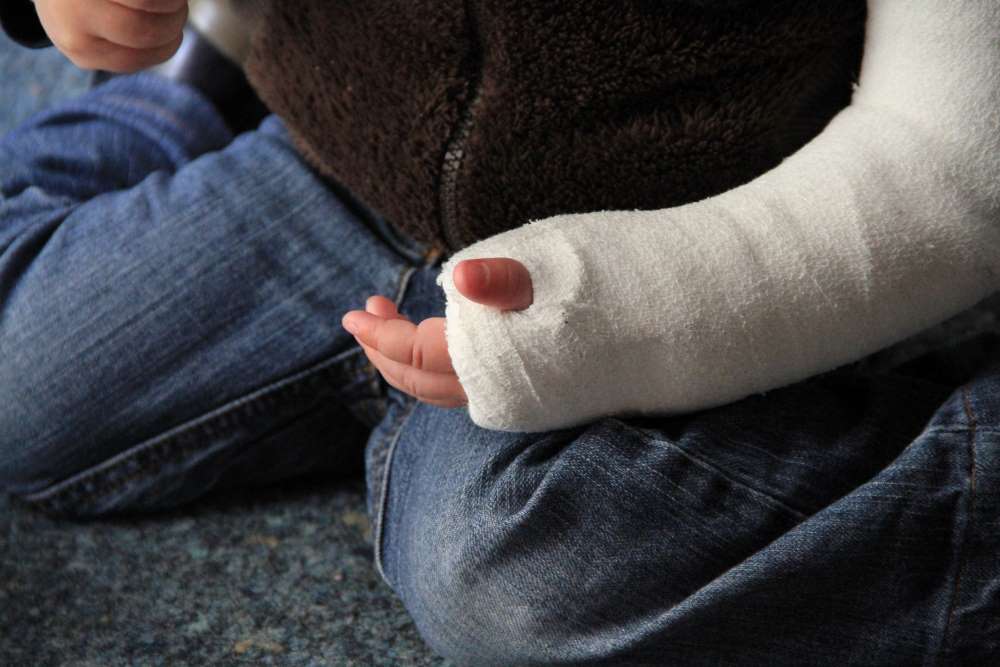
Ensuring the safety of children within the home is a paramount concern for any caregiver. Every year, thousands of children are injured severely enough to require hospitalization due to accidents in their own homes. These incidents range from minor bumps and bruises to more serious injuries that can have long-lasting effects on a child's health and well-being. As the home is supposed to be a safe haven, it's crucial for parents and caregivers to be vigilant and proactive in managing the environment. By identifying and understanding the biggest household hazards, effective measures can be taken to mitigate these risks and ensure a safer space for the youngest members of the family.
Accidental injuries within the household are not only distressing but also alarmingly common, making it one of the leading health threats to children under the age of five. Many of these injuries are preventable with the right knowledge and precautions. Areas of the home that are often overlooked can pose significant dangers. From the staircase that isn’t properly gated to the bathroom medicine cabinet left unlocked, each oversight can potentially lead to harm. By learning about the specific hazards that lurk in different areas of a house, parents and caregivers can implement tailored strategies to prevent these potentially devastating accidents. This proactive approach is essential in transforming a home into a truly safe and nurturing environment for children.
1. Falls
Falls are the leading cause of non-fatal injuries for children in the home. They can occur anywhere but are most common from stairs, windows, and high furniture. To prevent falls, use safety gates at the top and bottom of stairs for younger children, install window guards, and ensure furniture such as bookshelves and dressers are securely anchored to the wall to prevent tipping. Additionally, keep climbable objects away from windows and ensure balcony spaces have child-proof railings.
2. Poisoning
Household chemicals, medications, and even common plants can pose significant poisoning risks to children. In 2019, the American Association of Poison Control Centers reported that 45% of all exposure cases involved children under the age of six. To combat this, store all chemicals, detergents, and medicines in high, locked cabinets, well out of reach and sight of children. Always keep products in their original packaging and dispose of unused or expired substances safely.
3. Burns and Scalds
Burns from hot liquids, steam, cooking utensils, and open fires are frequent household hazards. Scalds, in particular, can occur quickly and cause severe injury. To prevent burns, set your water heater to below 120 degrees Fahrenheit, use back burners when cooking, and keep pot handles turned inward. When bathing children, always test the water temperature with your wrist or elbow before allowing the child to enter.
4. Drowning
Drowning can occur in mere inches of water, making bathtubs, buckets, toilets, and even large containers of liquid potentially deadly to young children. Never leave a child unattended in the bath, even for a moment. Keep bathroom doors closed and consider toilet locks to prevent toddlers from accessing them. Securely cover any large buckets or containers and empty them immediately after use.
5. Choking and Suffocation
Small objects, plastic bags, and certain types of food can cause choking in young children who naturally explore the world with their mouths. To prevent choking hazards, keep small objects like marbles, coins, and small batteries out of reach. Be vigilant about food size and shape; cut foods into small pieces and avoid giving young children hard, round foods like grapes and hot dogs unless they are sliced lengthwise. Ensure that all plastic bags are stored away and that cribs are free of loose bedding, pillows, and stuffed toys.
6. Strangulation
Cords from blinds and curtains can be a strangulation hazard for children. Secure all cords out of reach, use cordless window coverings, or install safety devices that keep cords taut. Similarly, keep any ropes, strings, and similar items away from young children and ensure that older children's play areas are free from these hazards.
7. Electrical Shocks
Curious toddlers might stick fingers or objects into electrical outlets, leading to shock or serious injury. Install tamper-resistant receptacles or use safety plugs on all unused outlets. Keep electrical cords out of reach, and teach older children the dangers of playing with electricity.
8. Furniture and Appliance Tip-overs
Heavy furniture and appliances can tip over and crush a child if they attempt to climb on them. Secure all heavy furniture, TVs, and appliances with anchors appropriate for the item’s weight. Always supervise young children in rooms where they might be tempted to climb furniture.
9. Sharp Objects
Knives, scissors, and other sharp tools pose a significant risk to children, especially as their curiosity often leads them to explore areas that may be hazardous. It is vital that all such items are stored securely in locked drawers or cabinets, well out of children's reach. This simple step can dramatically reduce the chances of accidental cuts or more serious injuries that could easily occur if a child were to handle these dangerous tools.
In addition to locking up sharp objects, consider implementing safety latches on all drawers and cabinets where these items are stored. Safety latches provide an additional layer of security, ensuring that even if a child manages to reach these storage areas, they cannot easily access their contents. These devices are typically easy to install and operate by adults while remaining robust enough to withstand attempts by children to open them. For households with particularly inquisitive children, it may also be advisable to store these tools in high cabinets or shelves where the physical barrier itself discourages access. Furthermore, educating older children about the dangers associated with sharp tools and the importance of respecting safety rules can also help prevent accidents. By combining secure storage, mechanical safeguards like safety latches, and proper education, parents and caregivers can create a safer environment that minimizes the risk of injuries from sharp household tools.
Conclusion
Ensuring the safety of children in the household is an ongoing process that adapts as they grow and explore their environment. By being aware of the common hazards and taking preventative measures, parents and caregivers can significantly reduce the risk of serious injuries and hospitalizations. Remember, supervision is key, and a vigilant eye can often be the best tool in preventing household accidents.



























